White grubs are lawn-damaging larvae of many beetles, including Oriental beetles, European chafers, Japanese beetles, and others. These C-shaped, white creatures feed on the organic matter present in lawn soil, including grassroots. As a result, the patches of dead grass appear all over the lawn, and the turf starts to thin.
Grub damage starts showing up in residential lawns anywhere from the middle of September to the end of November or from March to the beginning of May. After this time, the damage stops because grubs start maturing into pupae and adults.
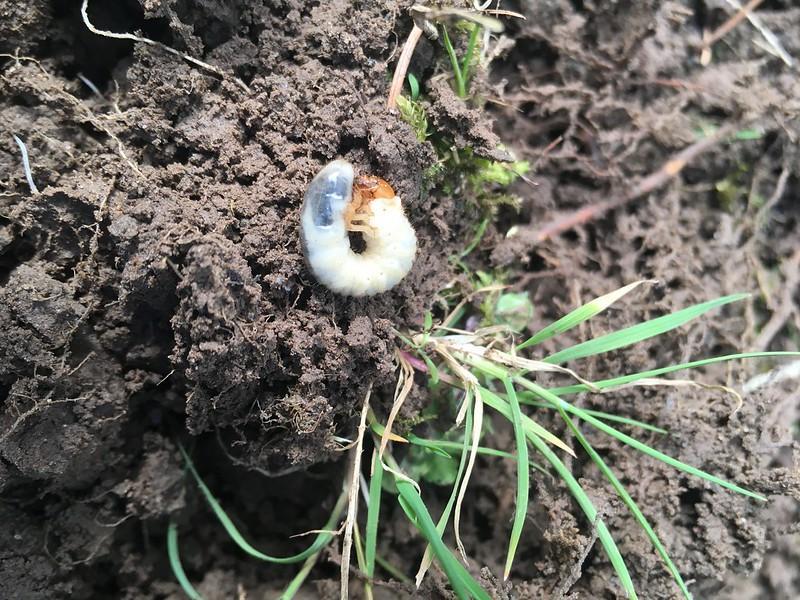
However, low-maintenance lawns may still be susceptible to damage by weeds and drought stress if the turf is thinned and weakened by grub feeding. That is why it is essential to use a grub killer on time, or it won’t work. So, when is the best time to apply grub control?
Early spring to late summer is usually the best time to apply a grub killer product to your lawn. During this time, there is an increase in grub worm activity in the lawn soil, and it is an ideal time to get rid of these nasty bugs.
However, first use a grub preventer between June and July, just before the grubs hatch, and then apply a grub killer treatment at the start of spring if you notice signs of grass damage.
Also, keep in mind that thinning turf and the appearance of dead patches in spring and summer are not always signs of a grub infestation. So, make sure that the damage to the lawn is caused by grubs and then use a grub killer. Read on to learn more!
Be Sure The Problem Is Grubs!
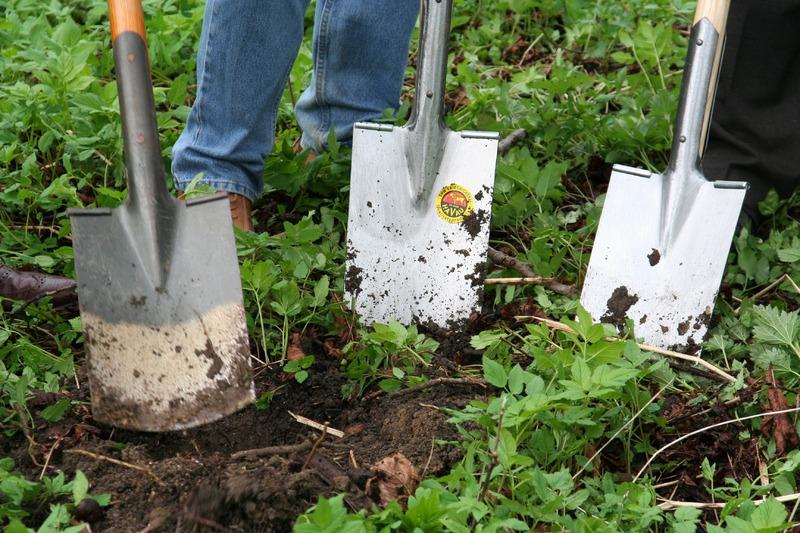
It is essential to make sure that grubs are the cause of the lawn damage and thinning turf before taking any action. Otherwise, it will be just a waste of resources, time, and effort.
Signs Of Grub Damage
- Your lawn will develop irregular patches of brown grass in various locations.
- The turf feels spongy and rolls up like a carpet at various spots on the lawn.
- Raccoons, skunks, or birds are digging up the yard as they love eating big grubs.
However, keep in mind that raccoons, skunks, and birds also eat other insects and earthworms that are present in the soil. So, it is highly recommended that you still your turf and lawn soil for the presence of white grubs before using a grub preventer or killer.
Inspect Soil For White Grubs
If you have reason to believe that your lawn is infested with white grubs, you should make a thorough inspection. However, keep in mind that finding one or two grubs in the soil is not unusual, especially in soils supported by frequent rain or irrigation.
Your lawn can do fine with just a few grubs present; however, if you see too many lawn grubs in the lawn soil, you need to take control measures. Nonetheless, here is how you can check your lawn for the presence of white grubs:
- Conduct a survey in August and September. Grubs are most active during these times and close to the surface.
- Starting in many separate locations, cut about one square foot chunks of turf with a spade at a depth of about 2 to 4 inches.
- Closely check the turf, thatch, and soil for grubs by pulling back the turf pieces to reveal the ground beneath.
Typically, fewer than five grubs per square foot of the lawn are considered normal and do not require any form of control measures. However, if a soil sample contains more than five grubs, it is necessary to take control measures.
Grub Preventer Vs. Grub Killer
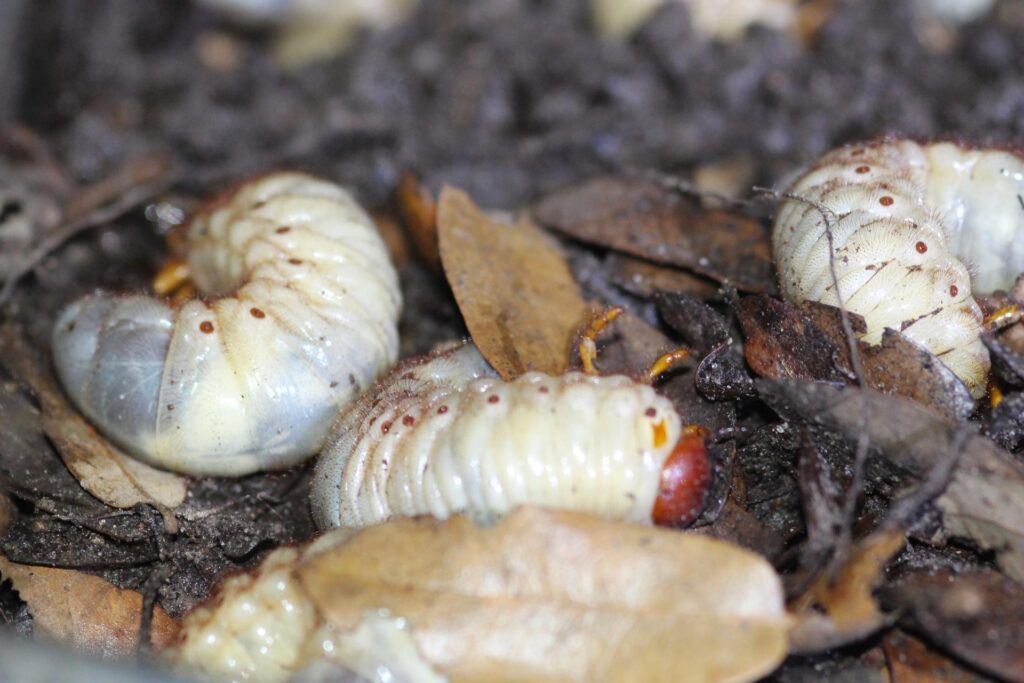
The ideal time to apply grub control depends on whether you are trying to stop them from infesting your lawn in the first place or kill the ones that are already there. If you are using grub preventers, in most cases, June and July are the best time to apply them to your grass. It is the time when grubs are due to hatch. This will provide the most effective grub preventative control for the remainder of the season.
However, if you want to put an immediate halt to the damage caused by grubs, the best time to apply a grub killer is as soon as you notice any symptoms of damage in your lawn. This is typically anytime between early spring to early August when grub worms are most active and will be devouring the grass and causing extensive damage.
Best Time To Apply Grub Control
As quoted earlier, the best time to use a grub preventer is in June and July when grubs hatch, and the best time to use a grub killer is around August, when grubs are most active. However, the best time to use a grub killer can vary depending on where you live.
For instance, ideal timings for grub control in the states of Iowa, Texas, Massachusetts, New Jersey, and Florida will be different because the weather and species that are common in each of these places are different.
So, here is a list of recommended timings for controlling grubs in various states:
| Area or State | Best Time To Apply A Grub Killer |
|---|---|
| Connecticut | Early August |
| Delaware | April to May |
| Florida | Late June to early September |
| Kansas | Mid-June through early July |
| Massachusetts | April to May |
| New Jersey | Mid-July to August |
| South Carolina | Early August |
| Texas | Early June to mid-July |
Using Grub Control
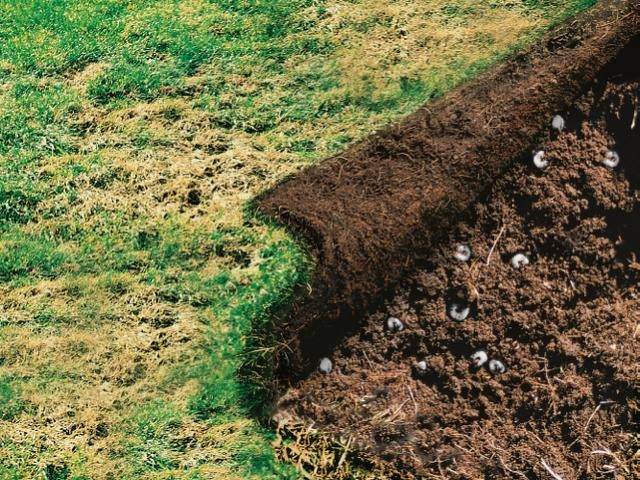
When you are convinced that your lawn is infested with grubs, you can tackle the problem head-on by using a grub control on the grass. This will prevent additional damage and put an end to the grub infestation. However, make sure that you put on the appropriate protective gear before applying any insecticide, especially if you aren’t sure what you’re doing!
Check For The Active Ingredient
The active ingredient is the most important factor to consider when choosing an insecticide designed to kill lawn grubs. There is a wide selection of products available, some of which contain the same functional components (just different names!). The quantities of the active ingredients are often displayed as a percentage of the total composition, either on the bottom right or left side of the bag.
Only Use Grub-Specific Insecticides
For grub control, avoid using products that only contain bifenthrin, deltamethrin, lambda-cyhalothrin, gamma-cyhalothrin, cyfluthrin, or permethrin.
Products with just these components won’t be effective at controlling grubs since these active ingredients bind to the organic matter in the soil and will not diffuse downward to the site where the grubs are feeding.
These products are excellent against insects that feed above the ground and are found on grass leaves or soil surface; however, they will not work effectively against those that feed on roots such as lawn or white grubs.
Preventive Grub Control Vs. Curative Grub Control
Once again, choose the right product depending on your needs. Grub preventers and grub killers have different active ingredients, and one will not work in place of the other. Grub preventers that contain thiamethoxam, clothianidin, or imidacloprid as active ingredients are often very reliable and reduce grub populations by 75 to 100 percent.
On the other hand, Grub killer products usually contain carbaryl and trichlorfon as active ingredients. When administered in September, they will kill 20 to 80 percent of the grubs, and when applied in late October, they will only kill 20 to 55 percent of the grubs.
When it comes to reducing the number of grubs on a turf, grub killers are usually not nearly as effective as grub preventers.
Mow The Lawn Before Grub Killer Application
It is highly recommended that you mow the lawn before using a grub control product. This will ensure that the chemicals in grub control products reach down the soil easily and not just keep sticking to the grass blades. Also, it will protect beneficial insects and pollinators visiting your lawn by cutting down the flowers of weeds that they are attracted to.
Water The Lawn After Applying Grub Control
It is essential that you water your lawn immediately after applying a grub preventer or grub killer to the grass. Watering the area immediately after the application helps transport the chemical off the grass and into the soil, where the grubs feed. Also, this will make the yard safe for children and pets to play in.
Use The Remonneded Amount
Another thing is the rate at which an insecticide that kills grubs is applied. The recommended amount of product usage is always specified very clearly on the label of the grub killer or grub preventer bag. Exceeding this rate offers very little in the way of benefits, and there is a good chance that you might damage your lawn.
Best Grub Killer Products
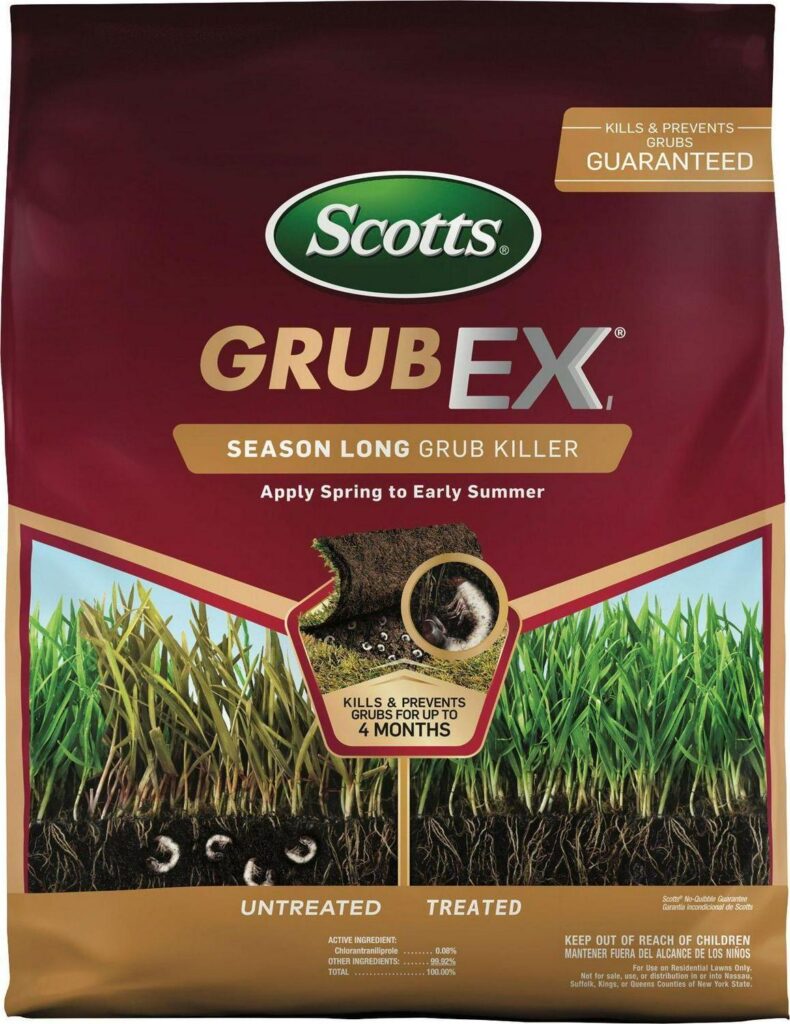
Scotts Grub-Ex is an excellent product to prevent white bugs from infesting your lawn.
Below are a few products that are sold for controlling grubs in the United States. We have also mentioned their active ingredients, ideal application timings, and physical form in the table as well to help you choose the best product for yourself.
| Product Type | Name | Active Ingredient | Physical Form | Added Fertilizer | Best Time To Use |
|---|---|---|---|---|---|
| Preventive | Bayer Advanced Complete Insect Killer | Cyfluthrin 0.36% and imidacloprid 0.72% | Liquid | No | June 1 to July 15 |
| Bayer Advanced Complete Insect Killer Granules | Cyfluthrin 0.05% and imidacloprid 0.15% | Granular | No | June 1 to July 15 | |
| Bayer Advanced Season | Imidacloprid 0.25% | Granular | No | June 1 to July 15 | |
| Premium Grub Control | Imidacloprid 0.2% | Granular | No | June 1 to July 15 | |
| Scotts Grub-Ex | Chlorantraniliprole 0.08% | Granular | No | April 1 to May 30 | |
| Curative | Gardentech Sevin Lawn Insect | Carbaryl 2.0% | Granular | No | In September or October |
| Bayer Advanced 24 hr Grub Killer Plus | Trichlorfon 9.3% | Granular | No | In spring or fall |
RELATED: The Best Grub Killers (Liquid, Granular + Organic) | A Complete Buyer’s Guide
Final Thoughts
The presence of too many grubs in the lawn soil can be highly detrimental to lawn health and appearance. That is why it is essential to get rid of the grubs from your lawn for good. However, using the grub control (whether preventive or curative) at the wrong time can change sweet success into something less appealing.
The grub preventers produce the best results when they are applied in June or July. It is a time when the beetle eggs hatch. On the other hand, grub killers are best applied around August because it is when grubs are most active near the lawn surface.
Also, make sure to choose the right product and water your lawn after applying the product.
Frequently Asked Questions
Can you apply grub control too early?
If grub killer pesticides are sprayed too early in the spring, there is a chance that the chemicals will partially break down by July, when most grubs hatch from the beetle eggs. Therefore, grub preventers are best applied in June and July, when conditions are ideal for hatching. Also, remember that using a grub control product too late is as useless as applying the grub control product too early in the season.
Do You Need Grub Control Every Year?
It is not necessary to apply grub control every year unless there is evidence of grub damage. If you have been treating your lawn with a preventer and killer for multiple years in a row, it is time to stop doing so. However, keep monitoring your yard for grub infestation and damage.
How often should you apply grub control?
Grub control only needs to be used twice a season: once as a grub preventer in June or July and once as a grub killer when you notice signs of damage. However, you might have to use control products two or three seasons in a row for total grub eradication.
Should I apply grubex before it rains?
GrubEx can be used before it rains; however, you won’t need to water it as you usually do when using a granular grub killer. Waiting for rain works best for lawns that are too large to water. Just make sure to use GrubEx at the right time, between May and July.
Can I apply fertilizer and grub control at the same time?
It is not necessary to wait before adding a regular fertilizer to your lawn right after using GrubEx. However, if you are using a weed and feed type product, you must wait at least one week, preferably two weeks, after applying grub control to your lawn.
Sources For Further Reading
How to choose and when to apply grub control products for your lawn – Michigan State University Extension Service
White grub management in turfgrass – Clemson University Cooperative Extension Service
Current Insecticide Approaches for White Grub Control – University of Massachusetts Amherst Extension Service







